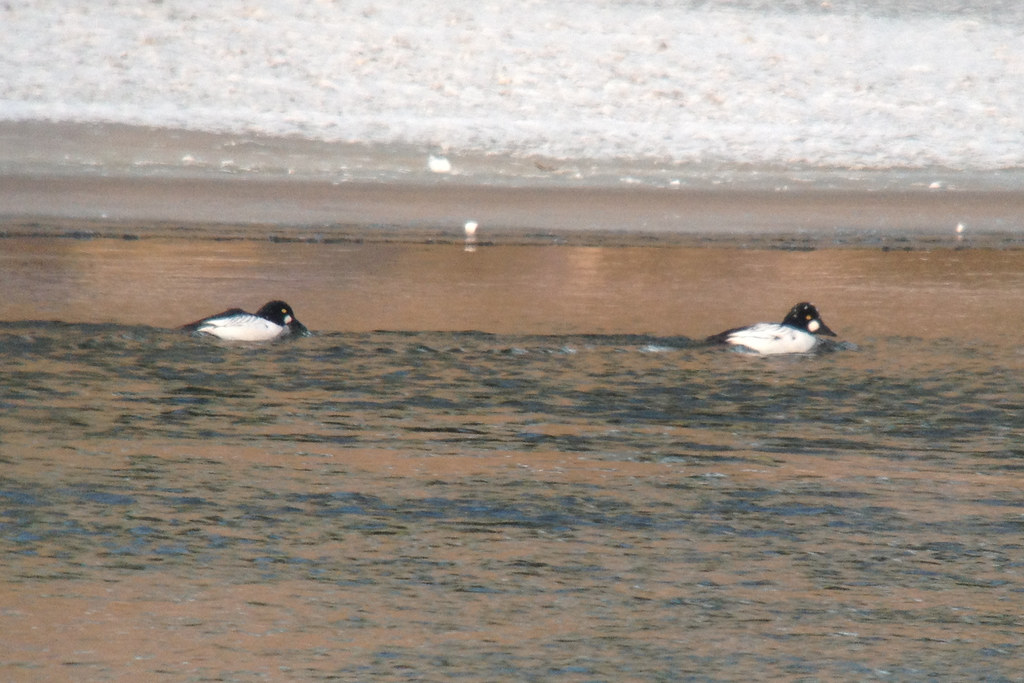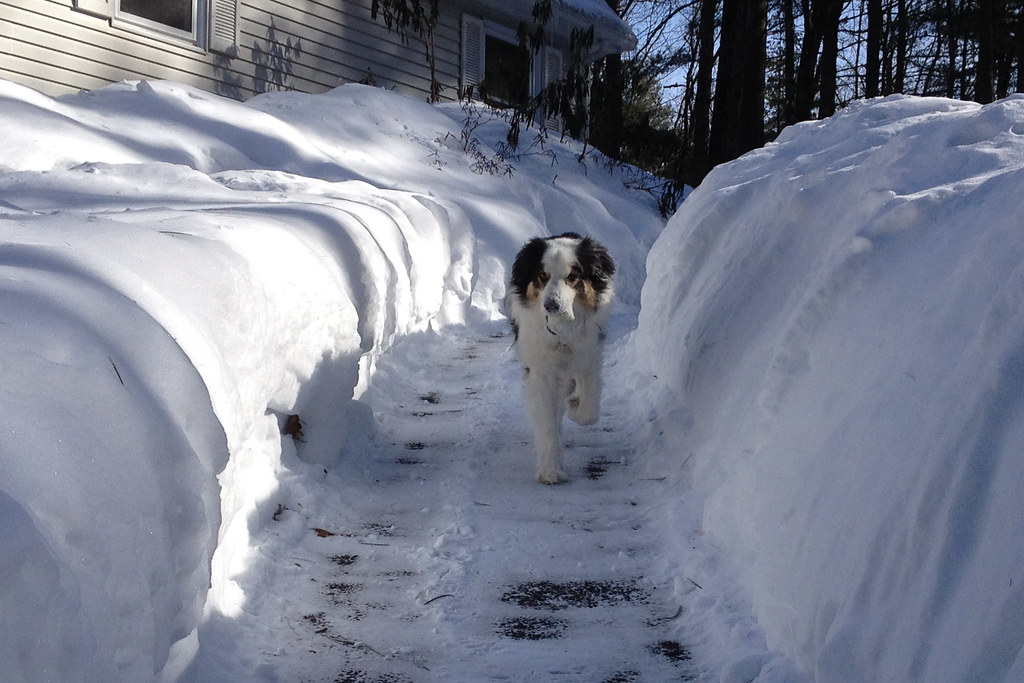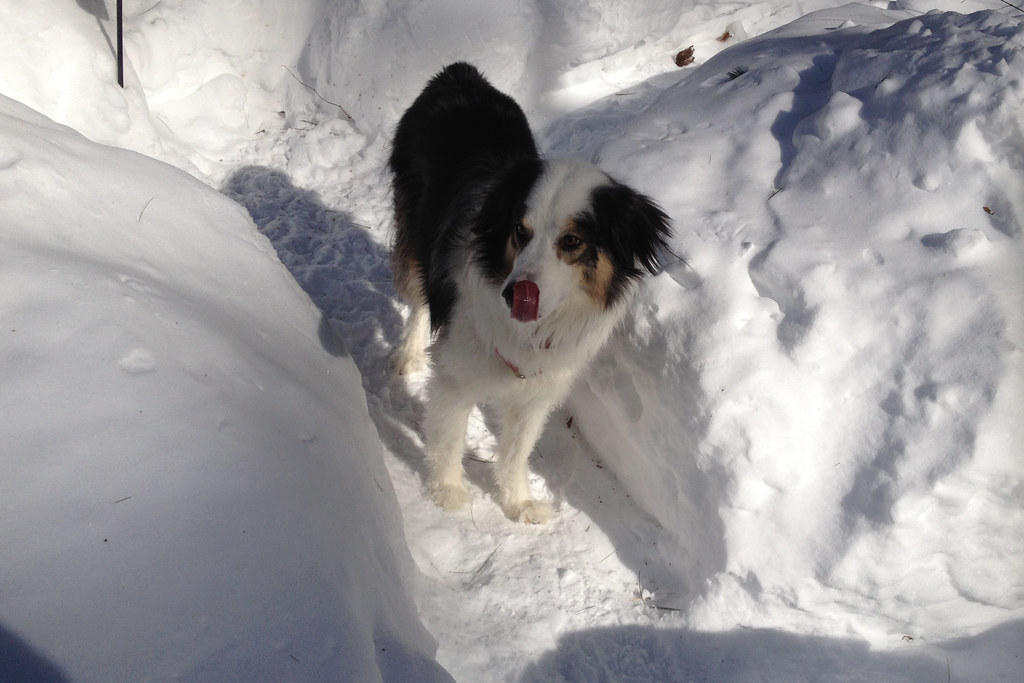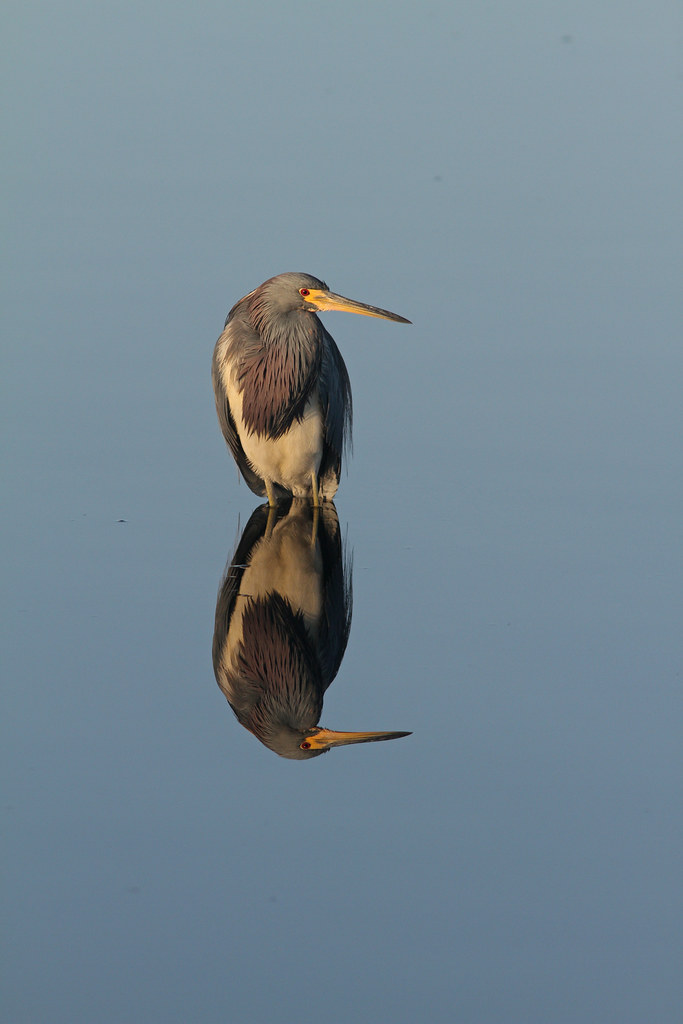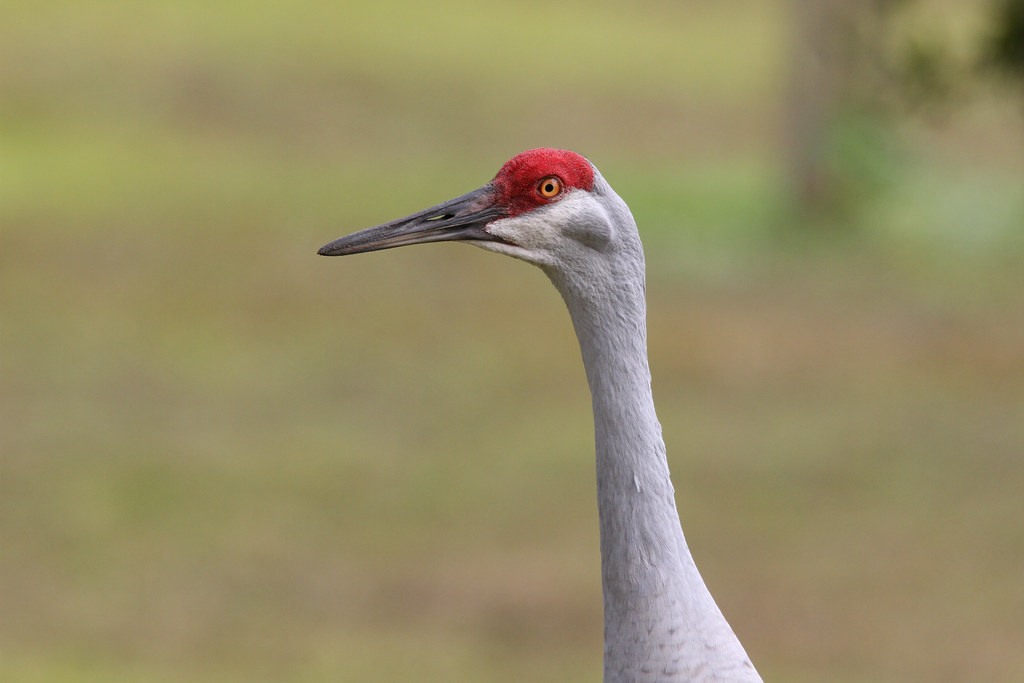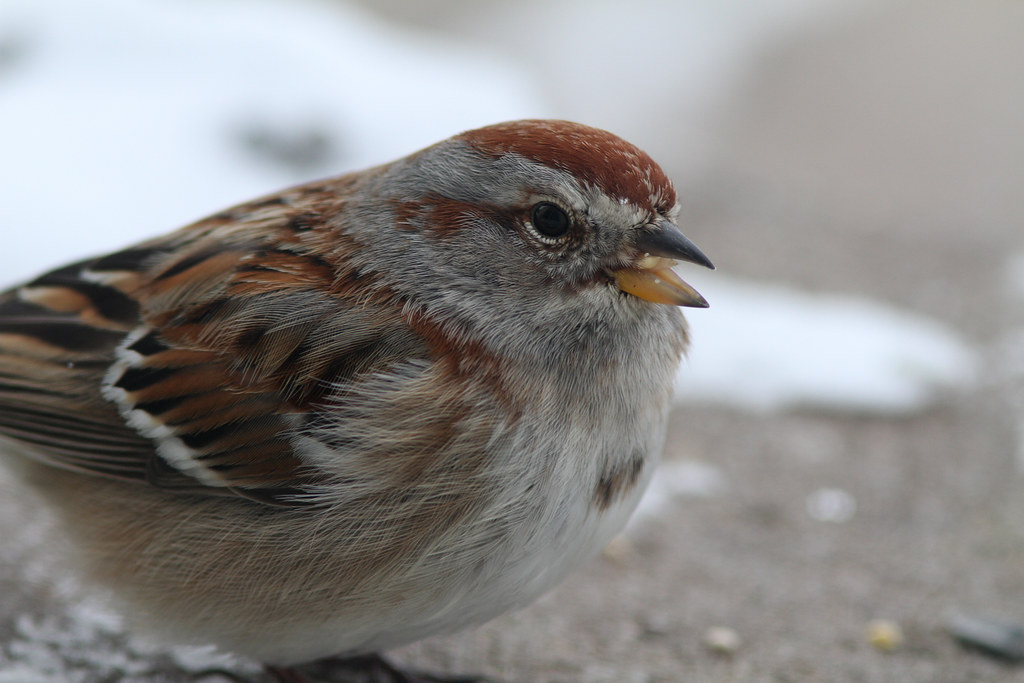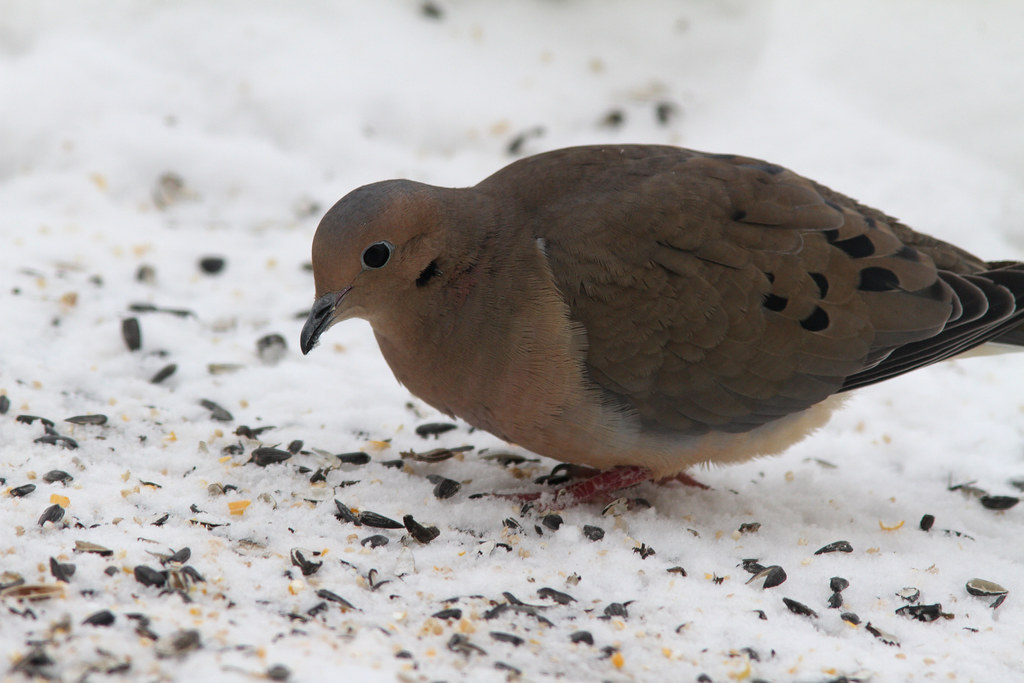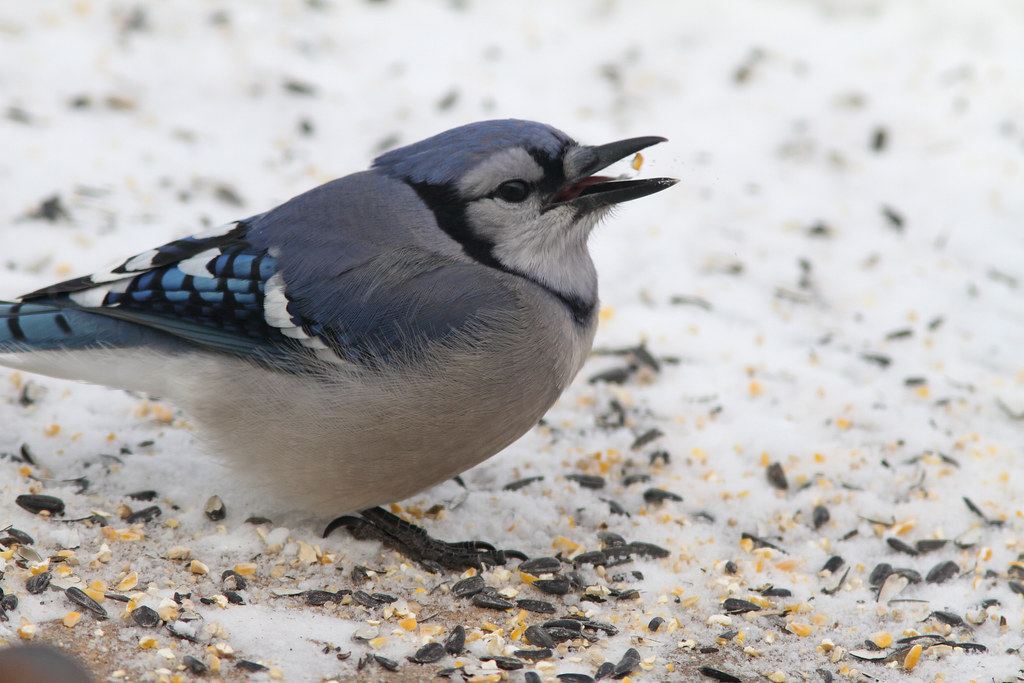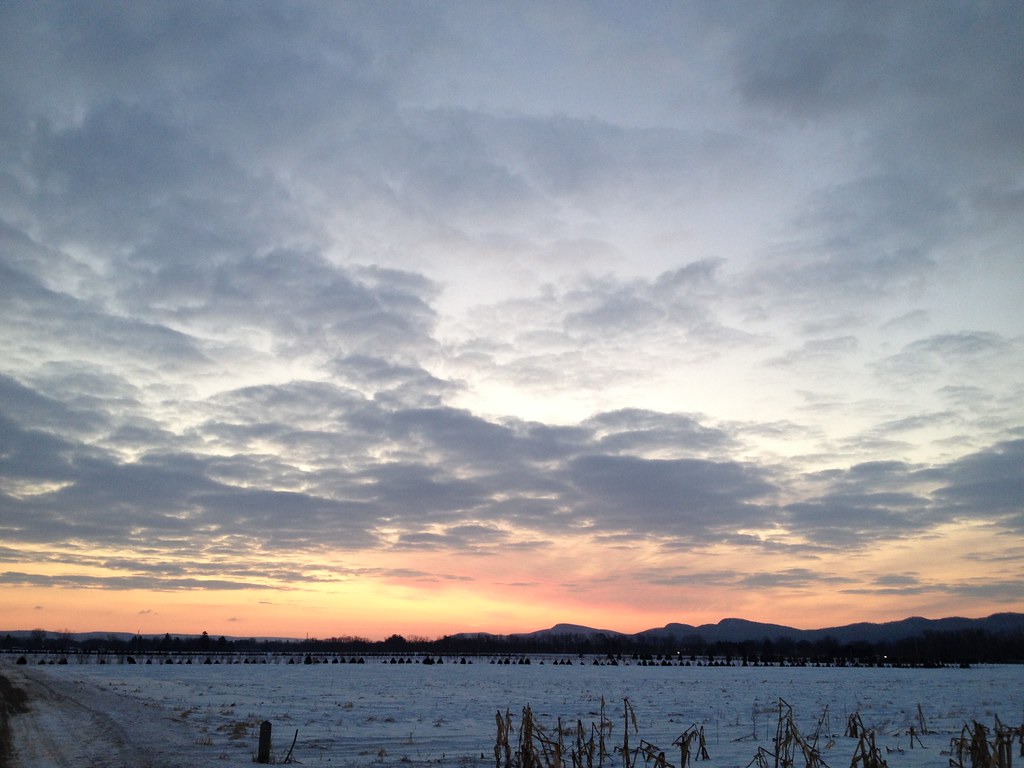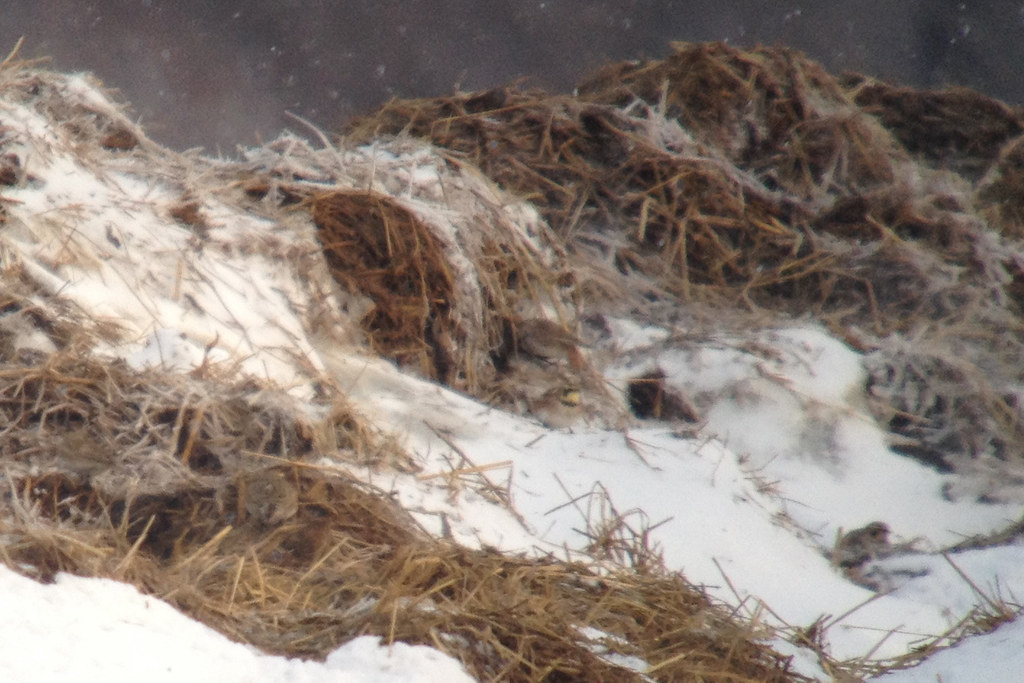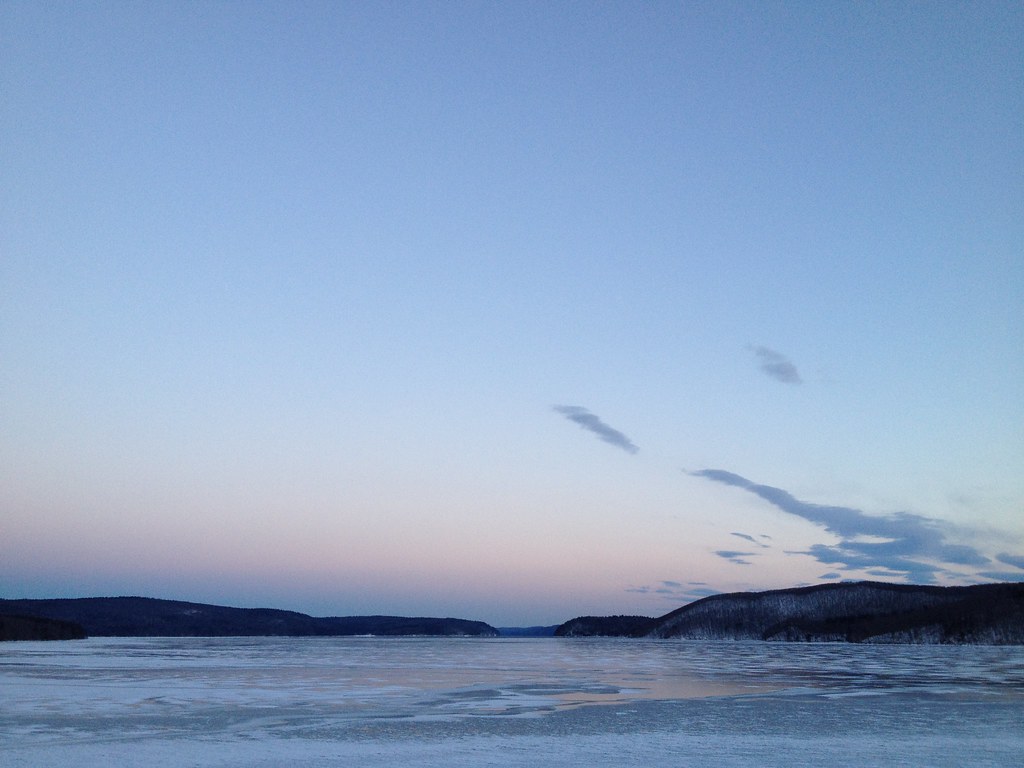As
the weather pattern continues to bring us more snow (another 7" yesterday), cold temperatures (high today around 10 with lows tonight -10) and wind (wind chills down to -35) I have more free time indoors to
spend on researching some interesting (at least in my mind) local bird related
topics. My first topic will involve one
of my favorite topics of hurricane related bird sightings. I
will look at a variety of systems that have impacted the area, the tracks the
storms took and the unusual species they produced. As I'm sure over time I will find additional information concerning storm related birds in western Massachusetts as I do more research, I will add to this post as I find info.
A great background piece on general hurricane birding (and a bit of detail on Irene) can be found on the eBird website at the following link: http://ebird.org/content/ebird/news/hurricane_irene_redux/
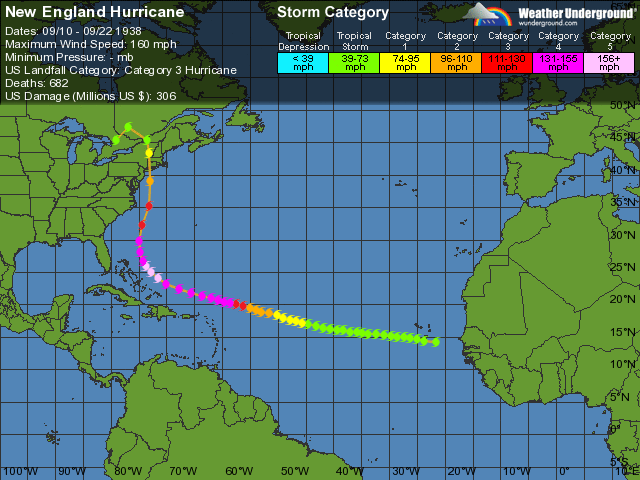 |
| New England Hurricane of 1938 track (map courtesy of weatherunderground) |
The
great Hurricane of 1938 that hit the area on September 21, 1938 as a category 3
storm at landfall tracked over Long
Island and then up through Connecticut and through the Berkshires. The storm is legendary in its intensity at landfall and the speed at which it arrived here as well as the enormous damage that it caused. Although there were certainly many birds
involved, the number of birders and flow of information was much lower than
today so the records from the area include only the following:
A Cory
Shearwater was found in Peru in Berkshire County on September 28 (only western mass record ever).
A Greater
Shearwater was found in Montgomery on the day of the storm (only western mass record ever).
A
Sooty Tern was found on the day of the storm in Northampton.
Multiple reports of Leach's Storm Petrels in Southwick, Holyoke, Northampton and on the Mongomery/Huntington line.
An interesting article about the storm and the birds it deposited can be found in
The Auk (The AOU's quarterly journal) from April 1939. I have included an excerpt below about other species that arrived with the storm.
Nighthawks, swifts and swallows--none of which had been seen in western Massachusetts
for several days before the hurricane--were indubitably blown back by it.
At Northampton some were seen amidst the storm, and next morning; and "thousands"
assembled together on September 23. At Williamsburg, two Purple Martins
appeared at 8 a.m. on September 25 (and one in Marshfield, September 29)! One
Nighthawk was seen as late as September 27. Gulls were blown up the Connecticut
Valley in large numbers. On the morning of September 22, "a great many" were at
Lake Congamond, Southwick (in the supposed path of the storm's very center),
and A. C. Bagg at Holyoke saw not only Herring Gulls but five or six Laughing
(very rare there), four or five Bonaparte's (rare), and two or three Ring-billed Gulls.
Terns were visitors still more exciting. Just before sunset on September 21, when
the worst of the hurricane had passed, one Northampton observer saw, besides one
petrel, four terns, three of which struck him as immature Sooties. Of course they
went by him too fast for any certainty; and the only hurricane record of that species
(which other, past hurricanes have several times brought to us) that I have seen is
from ManerviIle, Long Island, during the lull when the center of the storm was passing
there (Bird-Lore, 1938, p. 459). For several days following September 21, terns
were present at Hadley (flooded), too far away for specific identification; and at the
Holyoke dam on September 24 I saw one adult and two immature Common Terns,
and on September 26, one adult, one immature, and an adult Forster's Tern. Far to
the north-east, at Athol, a Common Tern was seen on September 22.
(The Auk, April 1939, pg 178).
Link to full article in
The Auk below:
https://sora.unm.edu/sites/default/files/journals/auk/v056n02/p0176-p0179.pdf
 |
| Hurricane Diane track (map courtesy of weatherunderground) |
The
next tropical system to bring some unusual birds into western Massachusetts was
Hurricane Diane that hit the area on August 18, 1955 and brought a Sooty Tern
to Pittsfield. The track was not optimal for bringing storm related birds to western mass as the track was to our south but obviously the discovery of a Sooty Tern means birds can turn up even with a less than optimal track.
 |
Hurricane Belle track (map courtesy of weatherunderground)
Hurricane Belle hit on August 10, 1976 and brought with it a Wilson’s Storm Petrel to the Connecticut River in Longmeadow. The bird was seen along with Leach’s Storm Petrels flying along the river. This hurricane also brought in several Least Terns to the area including two at Congamond Ponds in Southwick, another along the river in Agawam and another to the oxbow in Northampton. Besides the Least Terns associated with this storm the only other report of this species occurred in Longmeadow on August 26, 1971 which does not correspond with a tropical system on or before that date but Hurricane Doria came through the area just after August 26 so perhaps the date of the report is in error? I will have to dig a bit more the try to figure this info out.
Hurricane David track (map courtesy of weatherunderground)
|
Hurricane
David tracked through the area on September 6, 1979 and produced a Wilson’s Storm
Petrel in Dalton on September 7. It also
brought a handful of Sooty Terns to the area including one in Holyoke and
another n Longmeadow on the day of the arrival of the storm and another one to
Middlefield on September 9.
 |
Hurricane Gloria track (map courtesy of weatherunderground)
|
The arrival of Hurricane Gloria on September 27, 1985 produced a few Wilson’s Storm Petrels including two (with Leach’s Storm Petrels) in Agawam and a single individual from Stockbridge. The storm also produced a Royal Tern at Turners Falls (the only western mass record of this species).
 |
| Hurricane Irene track (map courtesy of weatherunderground) |
I
have birded a couple of tropical systems including Hurricane Irene and
Hurricane Sandy with Irene being the most productive for displaced birds with a near perfect track for bringing stuff our way (the storm tracked near the Connecticut River putting Quabbin just east of the track). The highlights from this storm were many and included the following:
-Wilson's Storm Petrels in Pittsfield at Pontoosuc Lake and another found dead (and salvaged) in Northampton
-Leach's Storm Petrel at south Quabbin (which I sadly missed as I left just before it arrived)
-unidentified storm petrel species at Onota Lake in Pittsfield
-White tailed Tropicbird at south Quabbin and another one at Onota Lake
-Parasitic Jaeger at south Quabbin (plus at least one other unidentified jaeger at same location)
-Sooty Tern at south Quabbin and Onota Lake
Irene also produced a fabulous showing of shorebirds with following species and numbers noted at Winsor Dam:
-Black bellied Plover (7)
-American Golden Plover (2)
-Greater Yellowlegs (1)
-Whimbrel (1)
-Hudsonian Godwit (12)
-Ruddy Turnstone (4)
-Baird's Sandpiper (1)
-Red/Red necked Phalarope (1)
-small peep (1)
-large shorebird (11)
The full list for the day from Marshall gives a real feel for the excitement of the day-
http://ebird.org/ebird/view/checklist?subID=S8750565
A few days after the passage of Irene I was at Covey WMA in Belchertown and came across a large swift species flying south along with Common Nighthawks. I was unable to definitively identify the bird but it may very well have been a Black Swift displaced by the storm. Below is a link to an earlier post regarding this sighting:
http://quabbinbirdingandbeyond.blogspot.com/2012/03/hurricanes-and-swifts-with-look-at.html
 |
| Hurricane Sandy track (map courtesy of weatherunderground) |
Although Hurricane Sandy didn't have a major impact here it nevertheless produced a variety of birds in the area with the primary species being seaducks (scoters, long tailed ducks, etc) plus a couple of Black legged Kittiwakes (one of which I was able to find at Winsor Dam and the other seen by James Smith up in Turners Falls...link to my blog post from that day-
http://quabbinbirdingandbeyond.blogspot.com/2012/11/black-legged-kittiwake-at-quabbin-and.html). A Red Phalarope was also seen in Turners Falls and another was found dead and collected at Mount Holyoke College in South Hadley.
A link from eBird with some additional details on the lead up to Hurricane Sandy can be found at the following link:
http://ebird.org/content/ebird/news/hurricane-sandy/
Another link to sightings from Sandy can be found here:
http://www.nemesisbird.com/news/tropical-storm-sandy-rare-bird-liveblog/
Besides
the pelagic birds blown in or put down by the tropical systems these storms can
also produce some fallouts of shorebirds as the birds migrate south or if the storm is
late in the season, waterfowl. Details
on these occurrences with early storms is tough to find information on but
shorebirds were well documented during Irene and Sandy (see info above).
Here
is a list of pelagic/coastal birds and the number of individual occurrences by county
in western Massachusetts. Many of these
are storm related but some are not. A
few of these were counts of more than a single individual present at
location. (B=Berkshire, F=Franklin, HD=Hampden, HP=Hampshire).
Audubon
Shearwater – 1 (HD)
Cory
Shearwater -1 (B)
Greater
Shearwater -1 (HD)
Leach’s
Storm Petrel –multiple reports from various storms
Wilson’s
Storm Petrel – 2 (B), 3 (HD), 1 (HP)
American
White Pelican – 1 (F), 1 (HD), 2 (HP)
Brown
Pelican -1 (HD)
White tailed Tropicbird - 1 (B), 1 (HP)
Northern
Gannet -2 (B), 1 (HP) + 1 in town of Enfield that now lies under the waters of Quabbin
Parasitic
Jaeger -1 (B), 1 (HP)
Little Gull - 1 (B)
Franklin's Gull - 1 (B), 1 (F), 1 (HD), 1 (HP)
Laughing Gull- 2 (B), 2 (HP)
Mew Gull- 2 (HP)
Sabine's Gull- 1 (HP)
Black
legged Kittiwake- 1 (B), 2 (F), 3 (HP)
Caspian
Tern - multiple records during inclement weather during spring and fall migration
Royal
Tern -1 (F)
Common
Tern- multiple records during inclement weather during spring and fall migration
Arctic
Tern- 1 (B), 1 (HD), 2 (HP)
Forster’s
Tern- A handful of spring records with most records in fall (usually associated with tropical systems)...more details on these records later.
Least
Tern- 4 (HD), 1 (HP)
Black
Tern- multiple records during inclement weather during spring and fall migration
Sooty
Tern -1 (B), 3 (HD), 2 (HP)
Thick
billed Murre- 4 (B), 1 (F)
Razorbill
-1 (F)
Black
Guillemot- 1 (HP)
Atlantic
Puffin- 1 (B)
As you can see from these records there are many possibilities for pelagic/coastal birds to reach western Massachusetts with many of these associated with storms (both tropical and non tropical). I will go into more detail on species associated with non tropical system in a future post.
General websites with great forecasts and insight into Atlantic tropical weather can found at the following links:
http://www.nhc.noaa.gov/
http://www.wunderground.com/blog/JeffMasters/show.html
http://www.tropicaltidbits.com/
I
used a variety of sources for the information and maps included in this post including the following:
MARC
website- http://www.maavianrecords.com/
eBird
website- http://ebird.org/
weatherunderground.com
website - http://www.wunderground.com/
The Auk, April 1939 "Hurricane aftermath", pg 177-179. https://sora.unm.edu/sites/default/files/journals/auk/v056n02/p0176-p0179.pdf
Bird Observer article "
Western Massachusetts Rarities", Kellogg, Seth and Smith, James, Feb 2007, pages 15-29.
North American Birds. "
Changes Seasons: Driven", Farnsworth, Andrew and Iliff, Marshall, pg 23-28 and "
New England", Ellison, Walter and Martin, Nancy, pg 37-42.
Birds of Massachusetts, Veit, Richard and Petersen, Wayne, 1993


